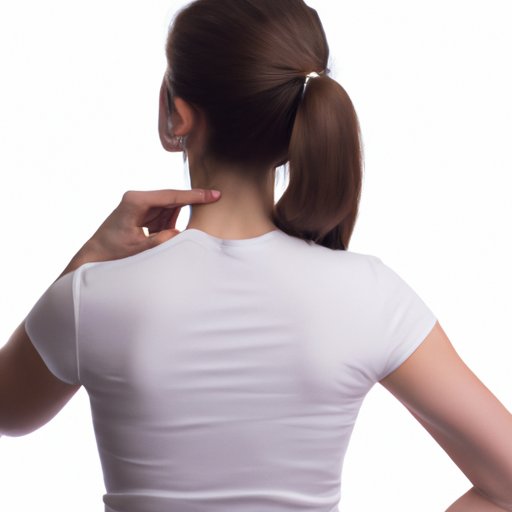Understanding Adult-Onset Scoliosis: Detection, Treatment, and Prevention
Scoliosis is a condition that affects the curvature of the spine. It’s often associated with adolescence, as the condition is typically diagnosed during puberty. However, scoliosis can also develop later in life in what’s known as adult-onset scoliosis. For those living with the condition, understanding the causes, symptoms, and treatment options can be instrumental in maintaining good spinal health and overall quality of life.
The Silent Onset of Scoliosis and How to Detect it in Later Years
Adult-onset scoliosis can be caused by a variety of factors, including degenerative changes to the spine, osteoporosis, and even genetics. In some cases, there may be no identifiable cause for the condition. Given that the symptoms of adult-onset scoliosis are often subtle, early detection is crucial for effective management. Common symptoms include:
- Back pain
- Numbness or tingling in the legs
- Uneven shoulders
- Uneven hips or waist
- Limited mobility
Unfortunately, many people with adult-onset scoliosis may not experience any symptoms until the condition has progressed to a more severe stage. As such, it’s essential to maintain regular check-ups with a medical professional who can assess the curvature of the spine and monitor any changes over time. Additionally, individuals can perform self-examinations at home by standing in front of a mirror with their shoulders relaxed. If one shoulder appears higher than the other or the waist appears uneven, it may be a sign of scoliosis.
The Challenges and Treatment Options for Adult-Onset Scoliosis
While scoliosis can be a physically challenging condition, it can also take an emotional toll on individuals, particularly when adult-onset scoliosis disrupts their quality of life or limits mobility. Where the curvature of the spine is mild, treatment may not be necessary. In other cases, treatment can help manage symptoms and/or correct the curvature of the spine.
Physical therapy is often prescribed to help strengthen the muscles surrounding the spine, improving overall flexibility and mobility. Bracing can be an effective treatment option for individuals with moderate scoliosis; however, it’s essential to note that wearing a brace can be uncomfortable and limiting for some individuals. For those with severe curvature, surgery may be necessary. During surgery, the spine is fused to correct the curve and prevent it from worsening.
Can Bad Posture Cause Scoliosis in Adulthood?
Poor posture and repetitive stress on the spine can lead to a range of issues, including chronic back pain, herniated disks, and muscular imbalances. It’s essential to note, however, that poor posture does not directly cause scoliosis. While slouching can make the curvature of the spine more noticeable, it’s not the root cause of the condition. Nevertheless, practicing good posture can help manage symptoms and maintain proper spinal alignment, which is critical for overall spinal health.
To improve posture, individuals should sit up straight at their desk or when standing for long periods. It’s important to avoid crossing the legs and to keep both feet flat on the ground. Additionally, maintaining a healthy weight, incorporating regular exercise, and stretching can all lead to better muscular support for the spine over time.
Preventing Scoliosis in Later Life – Is it Possible?
While some causes of scoliosis are beyond our control, there are steps we can take to maintain good spinal health and lessen the risk of developing issues in later life. Regular exercise, such as walking, yoga, or swimming, can help keep the spine strong and healthy. Additionally, maintaining a healthy diet rich in calcium and vitamin D is critical for maintaining bone density and overall spinal health.
Practicing good posture daily can also go a long way in maintaining spinal alignment. When sitting for long periods, it’s essential to take frequent breaks and stretch whenever possible. It’s also helpful to invest in ergonomically designed furniture that offers proper back support and helps maintain posture throughout the day.
Living with Scoliosis in Adulthood: One Woman’s Journey
Living with adult-onset scoliosis can be difficult, but it’s not impossible. One individual’s experience with scoliosis may differ from another’s, but the challenges faced by those with scoliosis are similar. Margie, aged 58, was diagnosed with adult-onset scoliosis a few years ago. Initially, she felt overwhelmed and unsure of where to turn. However, through medical treatment, physical therapy, and the support of loved ones, she has been able to manage the condition effectively.
For others facing similar challenges, Margie advises seeking support from others and not being afraid to ask for help when needed. She adds, “It’s important to remind yourself that you’re not alone and that there are people and resources available to help you navigate the condition.”
Conclusion
Adult-onset scoliosis can be a challenging condition to manage, but it’s essential to understand the potential causes, symptoms, and treatment options available. While some causes of scoliosis may be beyond our control, maintaining good spinal health is critical for preventing future issues and managing existing conditions. With early detection, proper treatment, and support from loved ones, those with adult-onset scoliosis can continue to lead full, active lives.
(Note: Is this article not meeting your expectations? Do you have knowledge or insights to share? Unlock new opportunities and expand your reach by joining our authors team. Click Registration to join us and share your expertise with our readers.)
